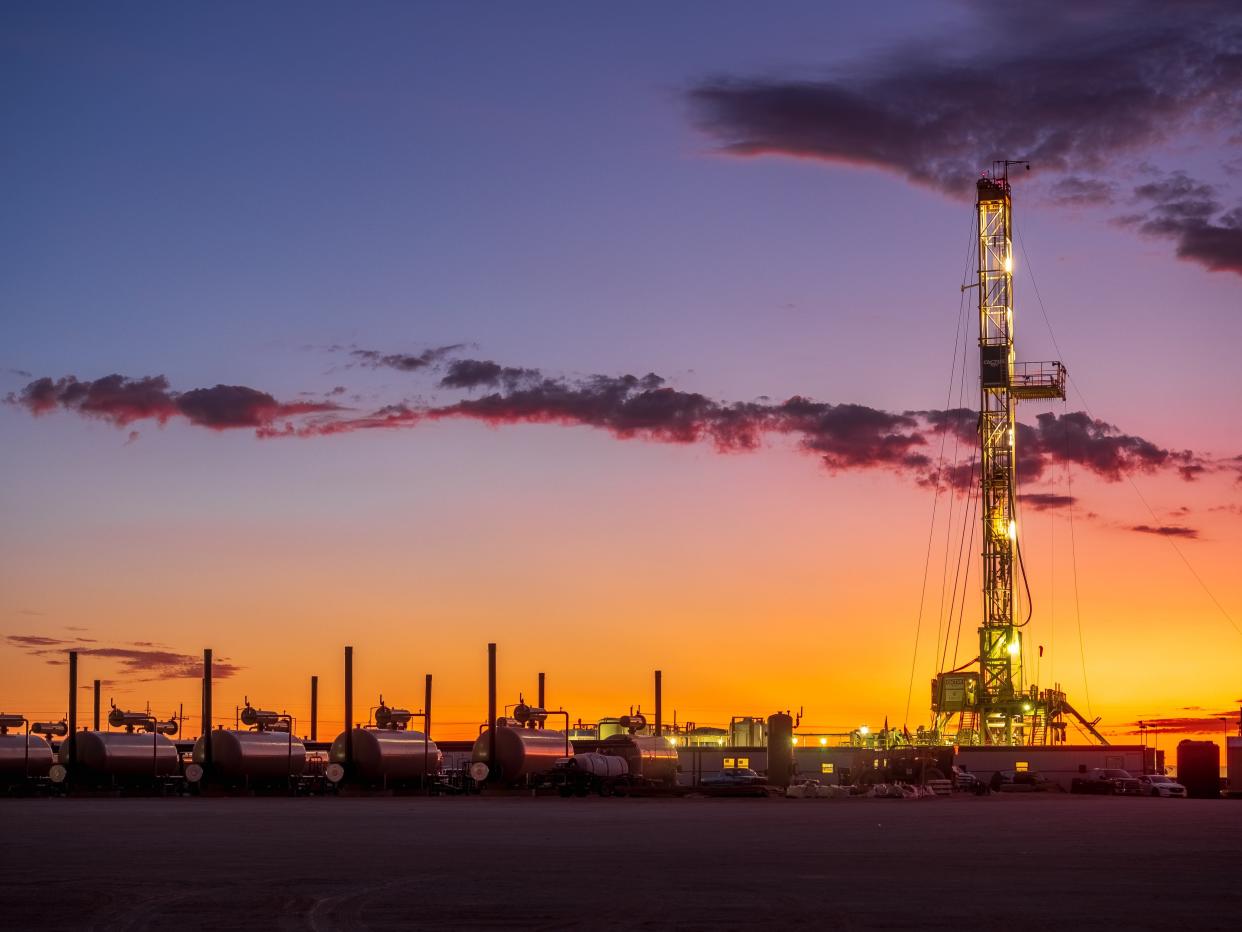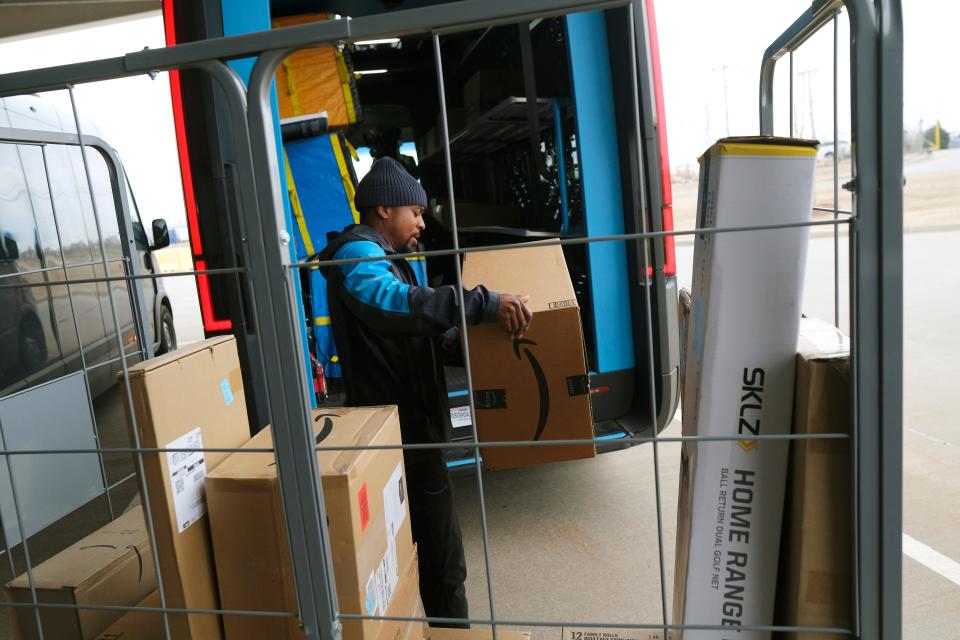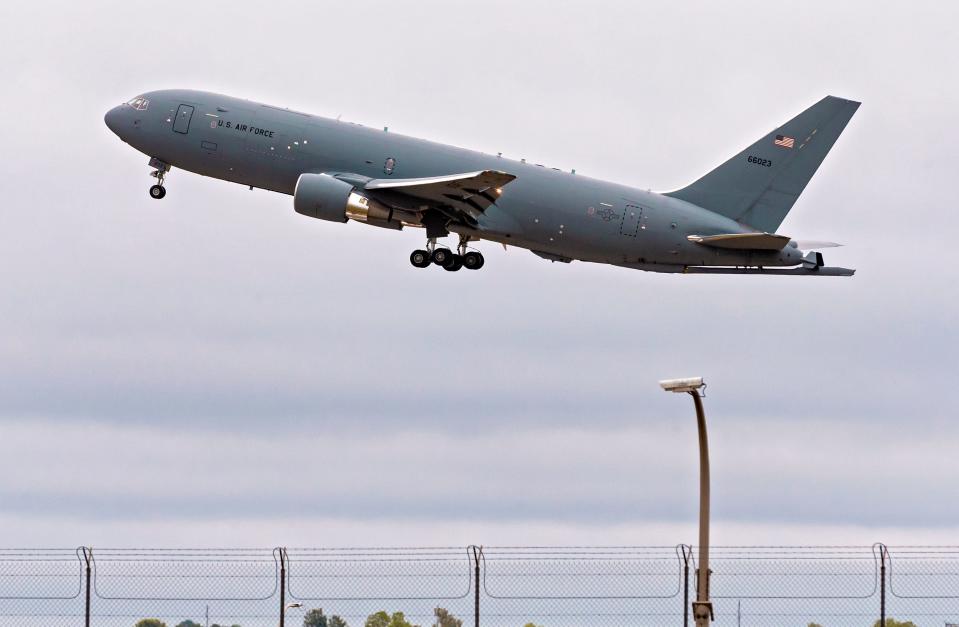In Oklahoma, diversification has long been key word in economic development

- Oops!Something went wrong.Please try again later.
Following decades of efforts to insulate the Oklahoma economy from the boom-and-bust cycles of the oil and gas industry, the state hosts a wide range of companies that have added highly paid professionals and hourly employees to the state’s workforce.
Aviation and aerospace jobs in the government and private sectors have been a major boon to the Oklahoma City and Tulsa areas. According to the Greater Oklahoma City Chamber, aviation and aerospace is the largest sector in the metropolitan area in terms of employment and economic impact. And that’s in a metro area that hosts the headquarters of Devon Energy, Chesapeake Energy and Continental Resources.
Online retailer Amazon has built massive fulfillment centers in Oklahoma City and Tulsa, and was the third-largest employer in Oklahoma in 2021, behind only the U.S. Defense Department and Walmart.
In addition to the large independent energy companies headquartered in the state, homegrown businesses with a national or regional impact like Hobby Lobby, Paycom, Braum’s, Love’s Travel Stops and Express Employment Professionals, are also among the biggest employers in Oklahoma.

Gov. Kevin Stitt, a mortgage company founder who had not served in elected office before winning his first term in 2018, has been on business recruiting trips to other states and other countries in the last four years. During his first campaign, state government was facing deep budget cuts because of the drop in oil prices.
“I think diversification is a good thing in that you take out some of the volatility in revenue,” the governor said in a recent interview with The Oklahoman. “And we’ve been really focused on that.”
The oil and gas sector plays a major role in the economic health of the state. Its boom-and-bust cycles have driven state leaders for the last few decades to make diversification a goal, particularly since state services rely heavily on revenue from taxes on production.
More: Oil and gas wastewater is dumped in this OKC neighborhood, but changes could soon reduce stench
In a 2021 study, the Oklahoma City branch of the Federal Reserve Bank of Kansas City found that: “As of mid-2021, the sector accounted for over 7% of the state’s gross domestic product (GDP) and nearly 9% of personal income. … Nationally, mining makes up only 1.1% of both GDP and personal income. In addition, oil and gas still accounts for nearly 20% of Oklahoma tax revenues, keeping it of high interest to state policymakers.”
Brook Simmons, president of the Petroleum Alliance of Oklahoma, put the industry’s share of GDP much higher.
“There are 4,000 oil and natural gas companies working in Oklahoma, and the work they do drives our state forward,” Simmons said in a blog post last month. “The industry accounts for $64.9 billion, or roughly one-third, of Oklahoma’s gross domestic product, generates $2.5 billion in tax payments to the state and accounts for $1 out of every $6 of household income.”
Cody Bannister, spokesman for the Petroleum Alliance, said Simmons’ figures come from the Oklahoma Energy Resources Board and incorporate more of the jobs associated with oil and gas activity than the federal Bureau of Labor Statistics and Bureau of Economic Analysis numbers used by the Federal Reserve.
Oklahoma is targeting 'mega projects'
Stitt has called oil and gas production the “backbone” of the Oklahoma economy, and he is a major booster of the industry. But he has spent much of the past year working to land a manufacturing plant for electric vehicle batteries. First it was Panasonic, then the Volkswagen Group. Both chose other sites, though Panasonic has reportedly expressed interest in Oklahoma for another project.
Stitt said in an interview, “I think we’re really close to landing a couple of big projects.”

Regarding the efforts to lure an electric vehicle battery plant, Stitt said, “You’re just taking what the economy’s throwing at you. Right now, there’s a disruption in the automobile (industry) and all the new technology with development of batteries. ... So we don’t want to miss out on that.
“And then with the Inflation Reduction Act that President Biden signed, there’s an opportunity” because some European manufacturing is moving to the United States.
Stitt is pitching the state’s affordability, its current economic strength and the fact that it is among the top states in the nation to which people are moving.
“It’s much better to be located here in Oklahoma because of all those things than on one of the coasts,” he said.
More: Oklahoma lost Volkswagen, but the Legislature gained $700 million
The Legislature has backed his efforts. State lawmakers and Stitt agreed on using about $700 million in state funds as tax incentives, set aside up front from surplus revenue, to attract the Panasonic and Volkswagen projects.
The drive to recruit one of the big projects — the first Panasonic pitch promised an estimated 4,000 jobs — is in line with a trend in economic development, according to a 2022 study from the State Chamber of Oklahoma.
“The latest — and arguably most important — trend in economic development is the mega project, and the public-private partnerships required to bring these large developments to fruition,” the study states.
“Recognizing the opportunity mega projects hold for their citizens and economies, nations and states are now systematically and intentionally targeting these projects in an effort to diversify their economies and to transform the workforce landscape, industry concentration, and innovative direction of their economies,” according to the State Chamber report.
Other big players in Oklahoma's economy
Agriculture also has been an economic engine for Oklahoma since statehood. According to the Oklahoma Farm Bureau’s Foundation for Agriculture, Oklahoma has 86,000 farms covering 35 million acres and contributes more than 188,000 jobs and $28 billion in total output. Seaboard Foods, which has a pork processing plant in Guymon, was in the top 40 employers in Oklahoma in 2021.
Agriculture long had its own boom-and-bust cycles that led to consolidation and the loss of farms, though trade and federal farm programs have given some measure of stability to the farm economy. According to the Kansas City Federal Reserve Bank, though, Oklahoma's agricultural sector is more vulnerable than those in some surrounding states because of its reliance on wheat and beef, which don't have the profit margins of corn and soybeans.
Health care has been a growing sector of the economy: Three hospital groups and the University of Oklahoma’s hospital and health sciences center were in the top 20 of Oklahoma employers.
For the Oklahoma City area and four other cities in Oklahoma — Altus, Enid, Lawton and McAlester — the U.S. military has been a mega project and a steady employer. According to the Oklahoma Department of Commerce, Defense Department employment was about 70,000 in 2021, counting both uniformed and civilian personnel.

Tinker Air Force Base in the Oklahoma City metro area has estimated 26,000 civilian and uniformed personnel. And its massive repair and maintenance depot has been a magnet for private contractor jobs associated with the work done on the base.
Jet engine maker Pratt & Whitney announced last month that it will build a $225 million facility in Oklahoma City to work on engines.
“Tinker is a cornerstone of Oklahoma City’s economy and culture, and supporting companies that support the base is important to our entire city,” Oklahoma City Mayor David Holt said. “Pratt & Whitney’s investment in our city, and in the jobs added with this new facility, is significant and appreciated.”
According to the company, new jobs, primarily in engineering and procurement, will pay more than $80,000 annually.
This article originally appeared on Oklahoman: Oklahoma hosts wide range of companies that add to economy

